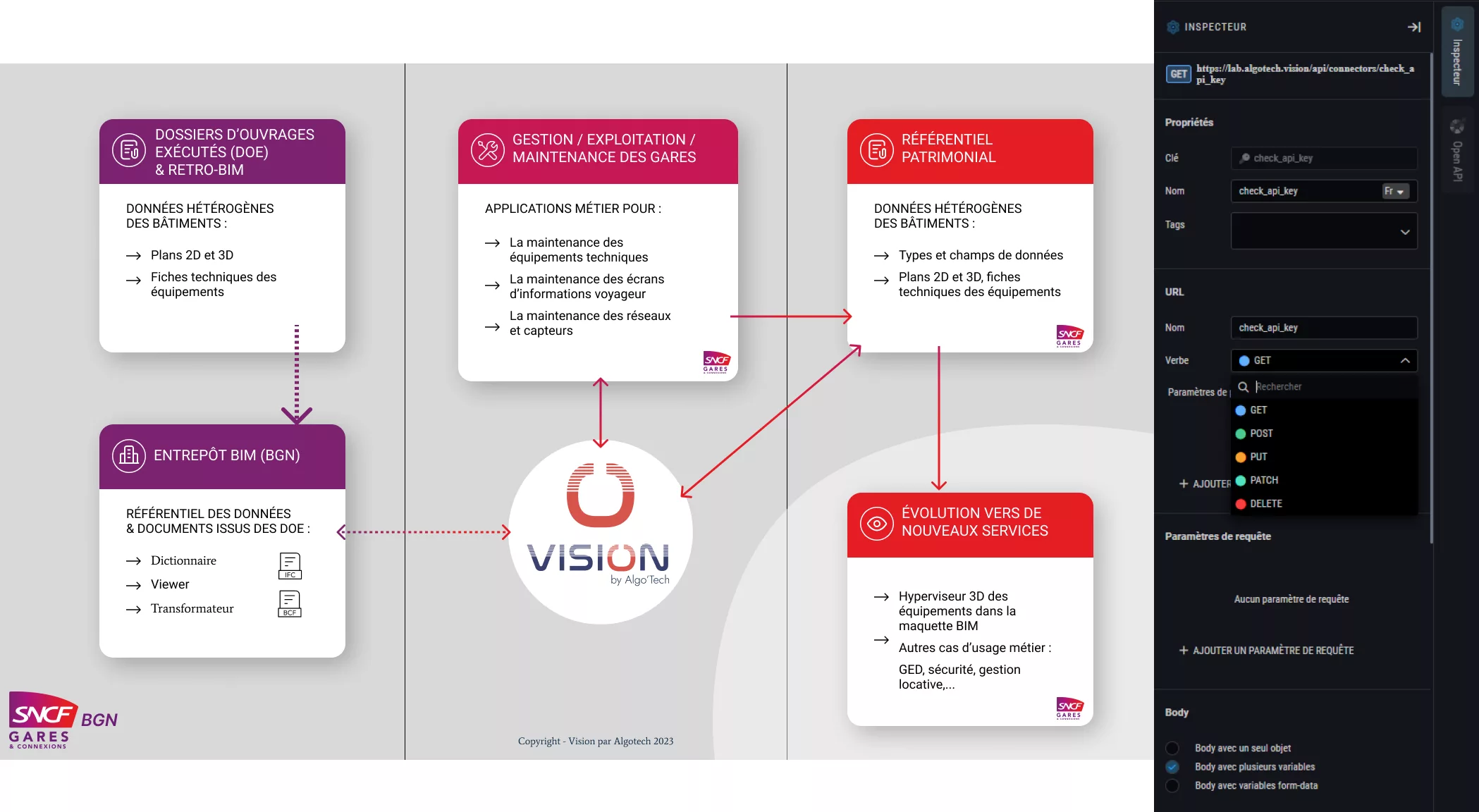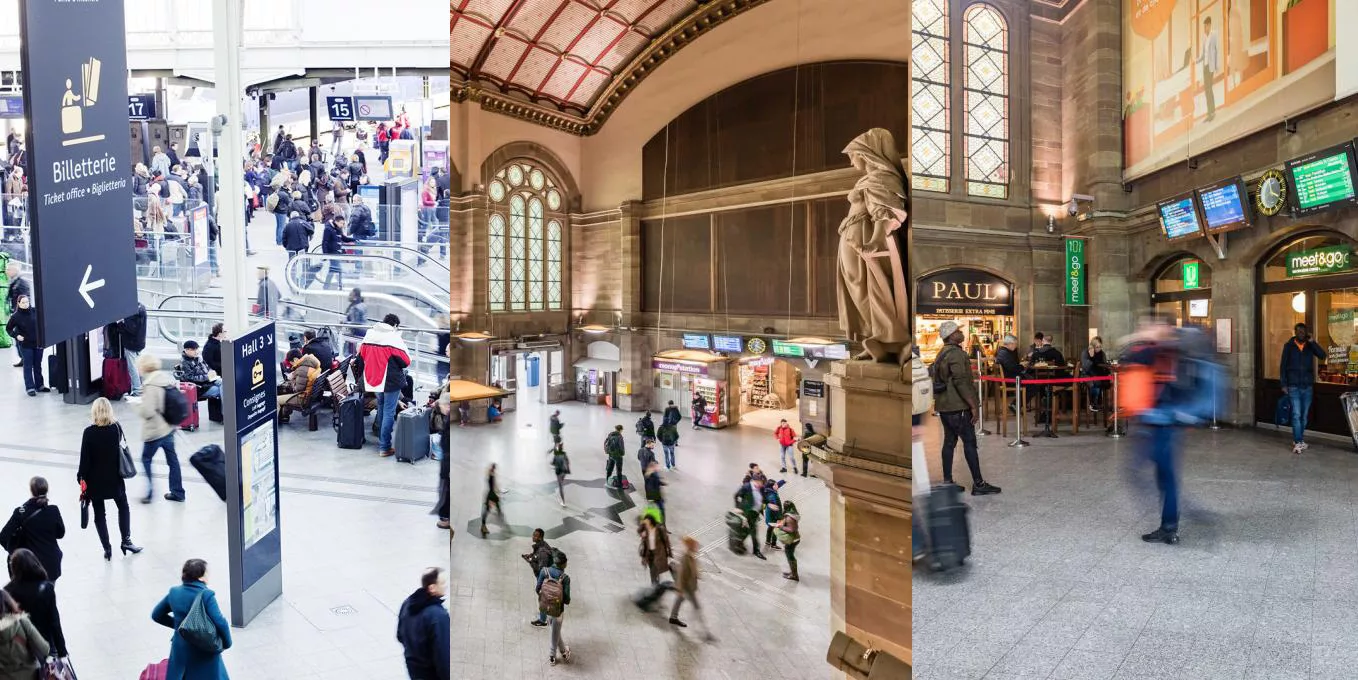
Vision, SNCF Gares et Connexions' agile data management system
Reading time: 6 minutes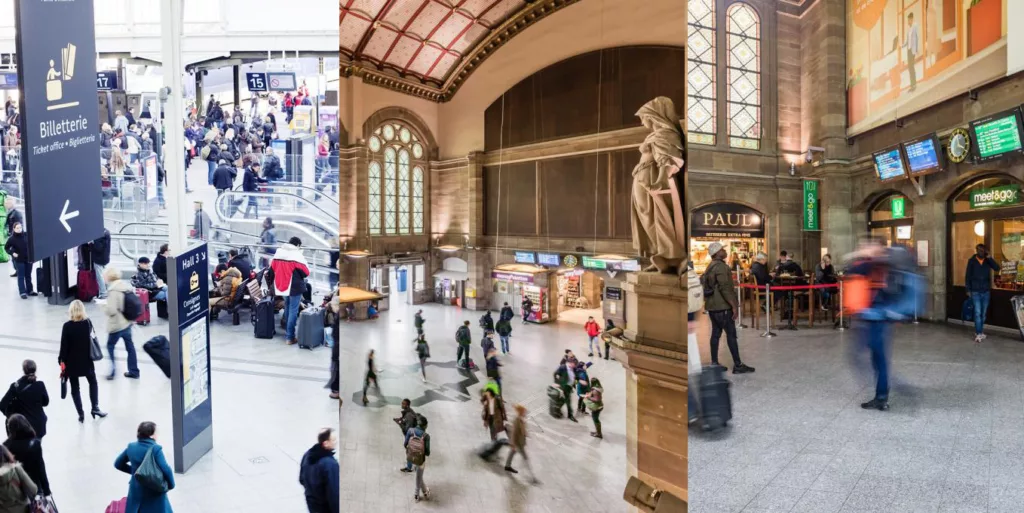
Gares et Connexions and Vision, a complex and ambitious Building Information Modeling (BIM) project meets a structuring, powerful and agile technological suite that perfectly illustrates the platform's many potential.
In this case study, learn how Vision allows you to flatten the different types of data involved in a project, reprocess them with automated workflows, and call them up or send them back from or to different systems.
In this article:
A tripartite station data architecture at very large scale
A subsidiary of SNCF, Gares et Connexions manages France's 3,000 stations, which welcome over 10 million users every day.
The management and operation of this gigantic asset (buildings, equipment, networks, commercial premises, etc.) requires the processing of infrastructure-related IT data to meet the availability and security requirements of the ever-increasing number of station users.
SNCF Gares et Connexions(G&C) has become a new user of the Archidata solution, which specializes in building and structure data modeling. Archidata is distributed in France by Algo'Tech, which also publishes the Vision platform.
The Digital Station project brings together the 2 IT solutions for :
- collect heterogeneous data from buildings
- standardize them
- disseminate them for use in management-operations-maintenance systems
- feed the equipment repository at the end of the chain
Within this heterogeneous eco-system of applications and data, the Vision platform enables the connection of building data with the operation and maintenance and the equipment repository.
Vision makes it possible to overcome the different generations, data models and the lack of openness of existing information systems.
- Eric Madigou, head of the architecture and technologies division (see video at the end of this article).
Step 1: Modeling BIM data
When Vision joined the project, Gare et Connexions had already been collecting and aggregating data for several months on the buildings delivered by the architectural firms and the various survey companies involved in the retro-BIM (laser survey and modeling) of SNCF G&C buildings.
These include 3D models as well as technical data sheets for premises, electrical, water and heating networks, large-scale furniture, display terminals, access terminals, security equipment, etc... the first stage in the digital transformation of stations.
This mass of data is then normalized ( IFC and BCF formats) with Archidata using a Checker and a Data Dictionary to create the building data repository known as the Digital Railway Stations BIM Repository (BGN)
It is on this basis that Vision intervenes in the first phase of attribute data modeling. The visual drag and drop interface allows to structure the data compiled in the BIM warehouse, to prioritize them and to link them together.
This work can, of course, be carried out in the "traditional" way, using the database languages normally employed. The use of Data Modeler Vision (a visual interface for database creation) offers 3 advantages at this early stage:
- the visual interface gives an overview of the relational data schema, the hierarchy and the links between the tables
- the formatting of each field is made easier and faster
- this strategic work is accessible without the need to know the exact syntax of database creation languages
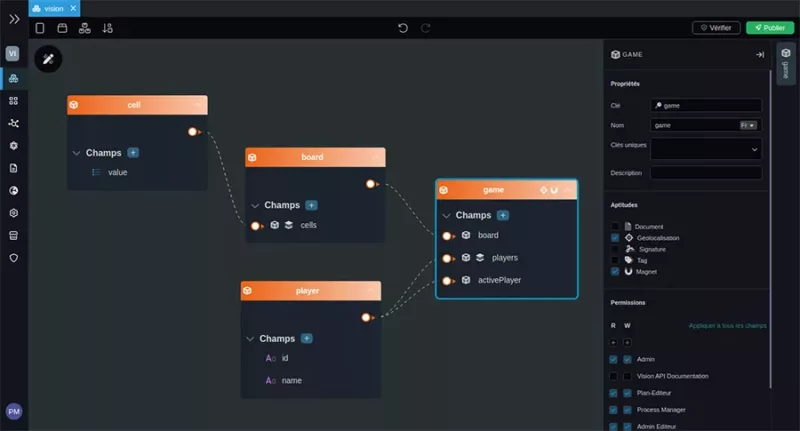
Step 2: Reworking of data with workflows and smartflows
After flattening the data, Vision allows you to set up several automated processing routines by drag and drop. The platform's syntax essentially refers to smartflows: smartflows are different from workflows in that there is no human interaction.
Vision is used here as an ETL (extract-transform-load) solution, thanks to its ability to extract data from multiple sources (database, API, etc.), transform it (sorting, algorithms, etc.) and then expose it via a documented API (swagger) to third-party systems: all without a single line of code.
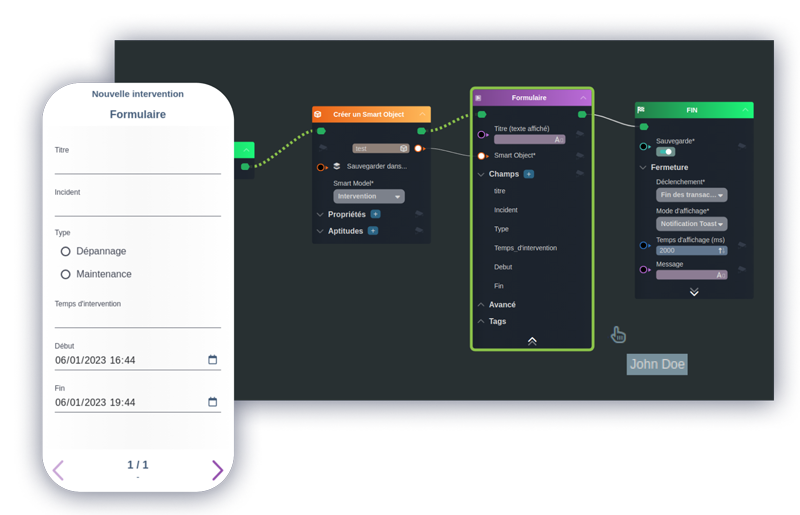
One of Vision's great strengths on this project is its ability to manipulate data.
- Farouk Ouzit, VisionProject Manager at Algo'tech
Step 3: Universal API connection with Vision
Once the data has been modeled and reworked, it can be made available to the 3 G&C maintenance management applications.
The CMMS recovers the data from the BIM to use them in :
- equipment maintenance
- maintenance of information screens
- maintenance of networks and sensors
The three CMMS systems are then connected to the equipment repository in which plans and technical data sheets for thousands of pieces of equipment in the 120 stations involved in the project will be stored.
This concerns a wide range of equipment, from lighting to escalators, including sanitary plumbing, check-in counters and passenger information screens.
These data interconnections are made by API routes, set up in the "API" module of the platform. Here again, no line of code is required. The visual logic also applies to API connections in Vision, with the possibility of testing the correct communication between APIs throughout the development process.
Vison is excellent for background processing, up to tens of thousands of API requests - Farouk Ouzit
As is the case for smartflows (data processing procedures), exchanges between machines are mainly scheduled at night to avoid operational data bottlenecks.

Conclusion and extensions of the Digital Stations project
Right from the start of the project, Vision proved to be a major asset in facilitating data manipulation.To carry out all these operations, there was no need to call in a parallel project, and therefore no need to make technological choices involving programming languages and specific technical skills. This time-saving and new working method has also pleased the client, who has decided to integrate Vision into other data processing projects within the Gares et Connexions repositories.
On target for 2023:
- Production roll-out of the BGN application to end users
- Consolidation of hosting for the various Vision applications implemented
- ...and why not set up new Vision applications?
For Eric Madigou, the results are excellent (see video):
Vision has enabled us to build true interoperability within our IS.
Over time, the platform allows us to easily go back to the processes to follow the evolution of our practices and our needs, for example when we need to migrate one of our applications.
Gares et Connexion SNCF thus has a robust system that is continuously updated and opens up the possibility of numerous evolutions.
After the essential phase of implementation assisted by Algotech, the SNCF teams are now autonomous on most of the current manipulations, in drag and drop.
Vision by Algo'Tech is an all-in-one No-Code all-in-one for creating professional applications.
Create your mobile & desktop user interfaces + the database that feeds them + the processes to guide the user through the application + the API connections to data sources.
The platform also offers you to host your creations in a centralized space to manage multiple applications, users and their rights.



